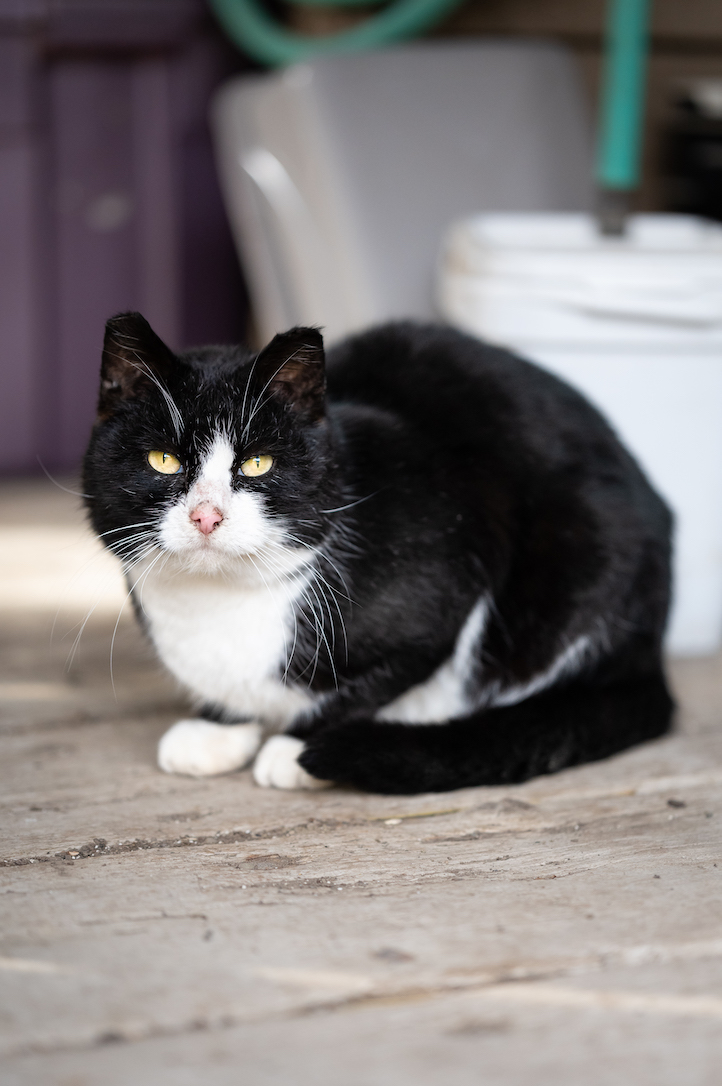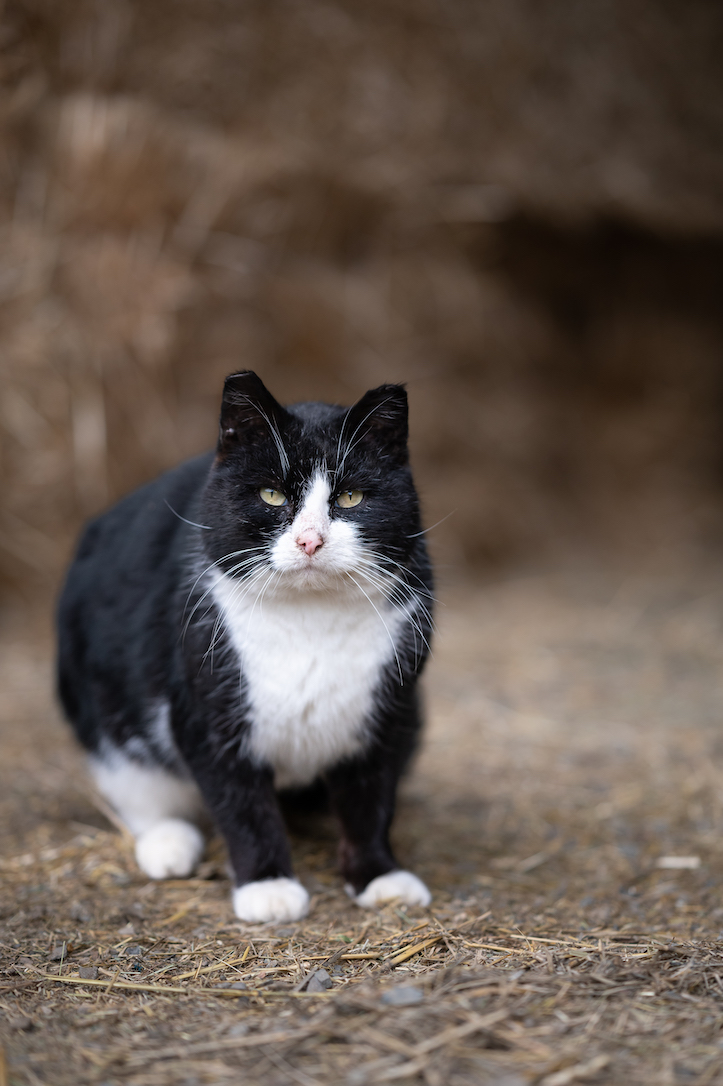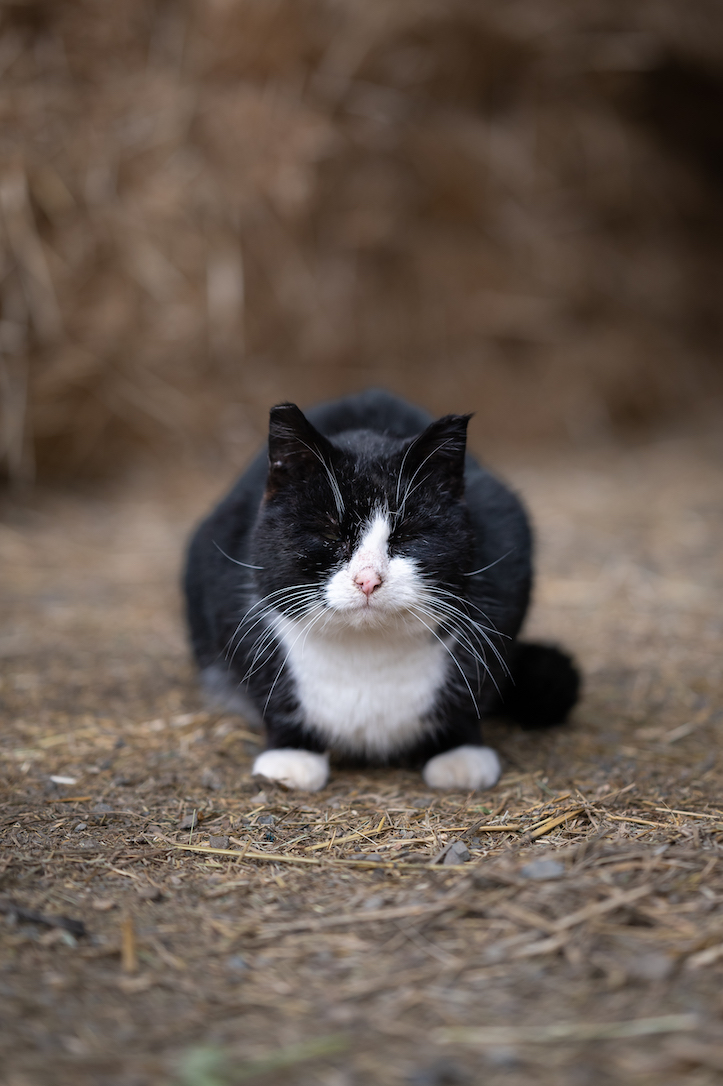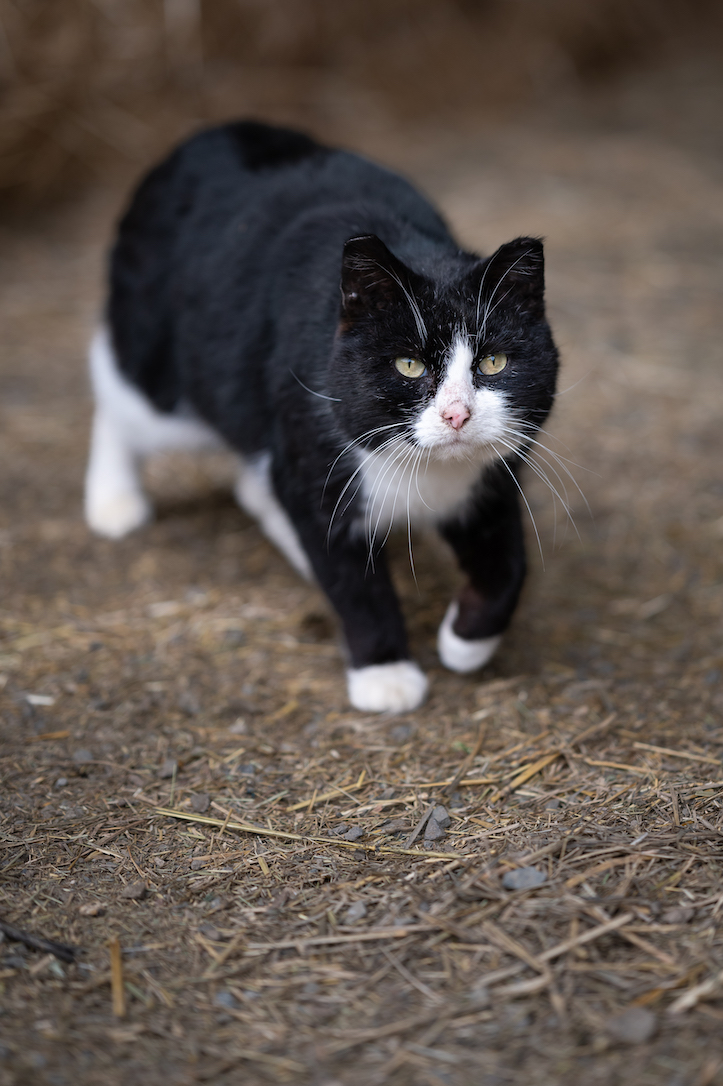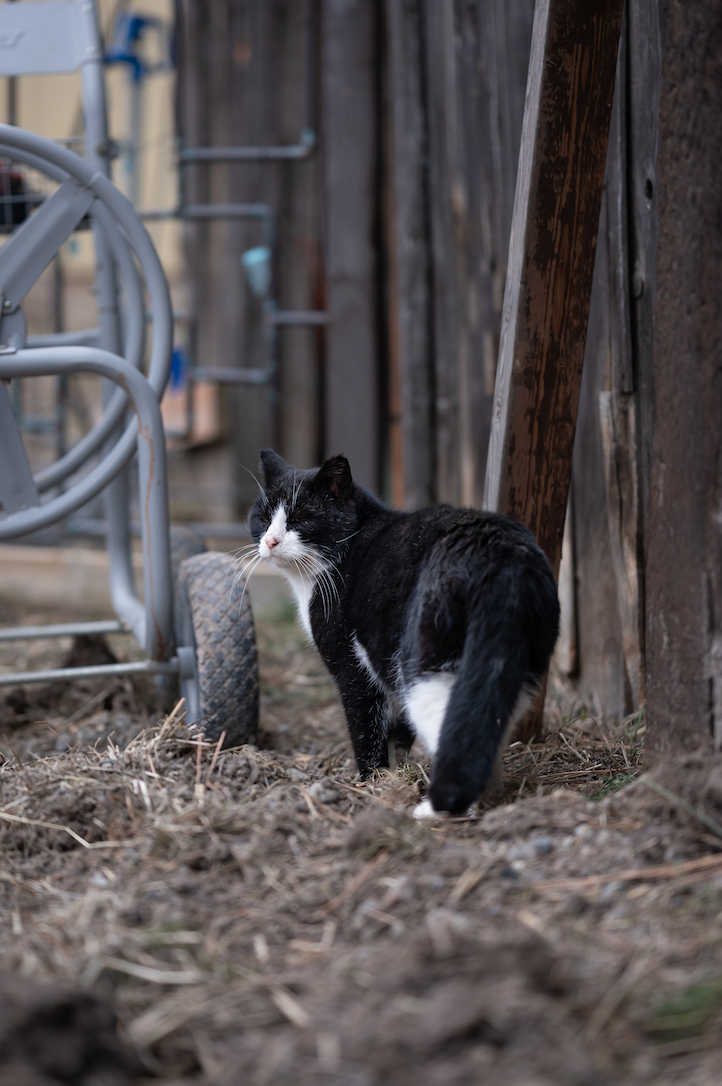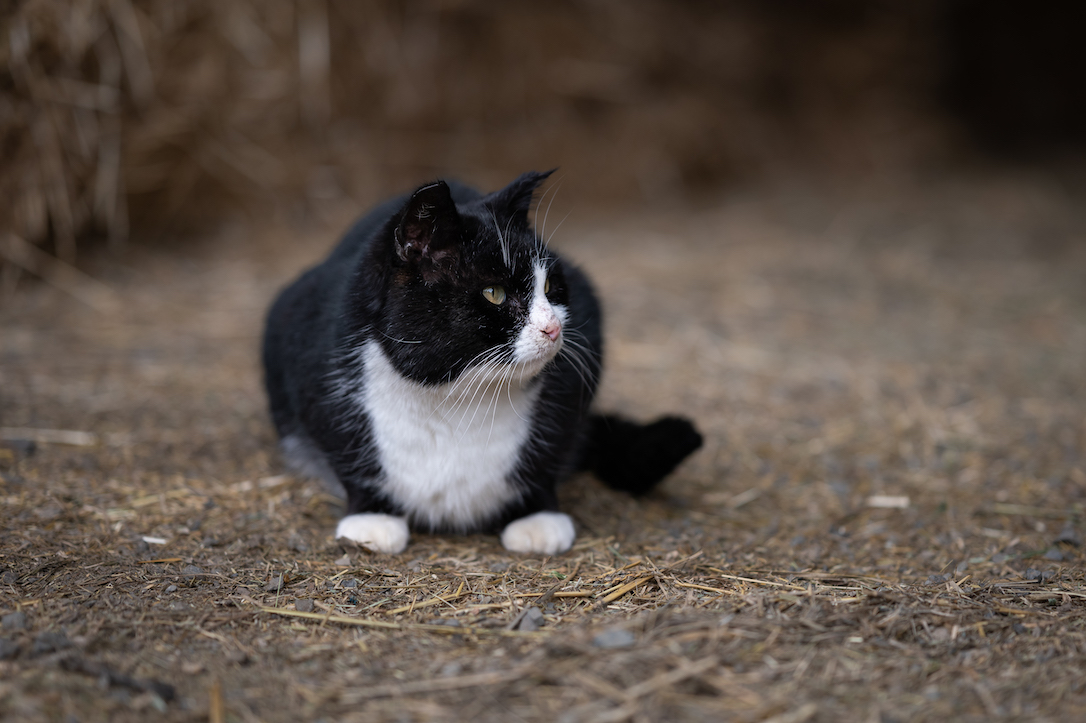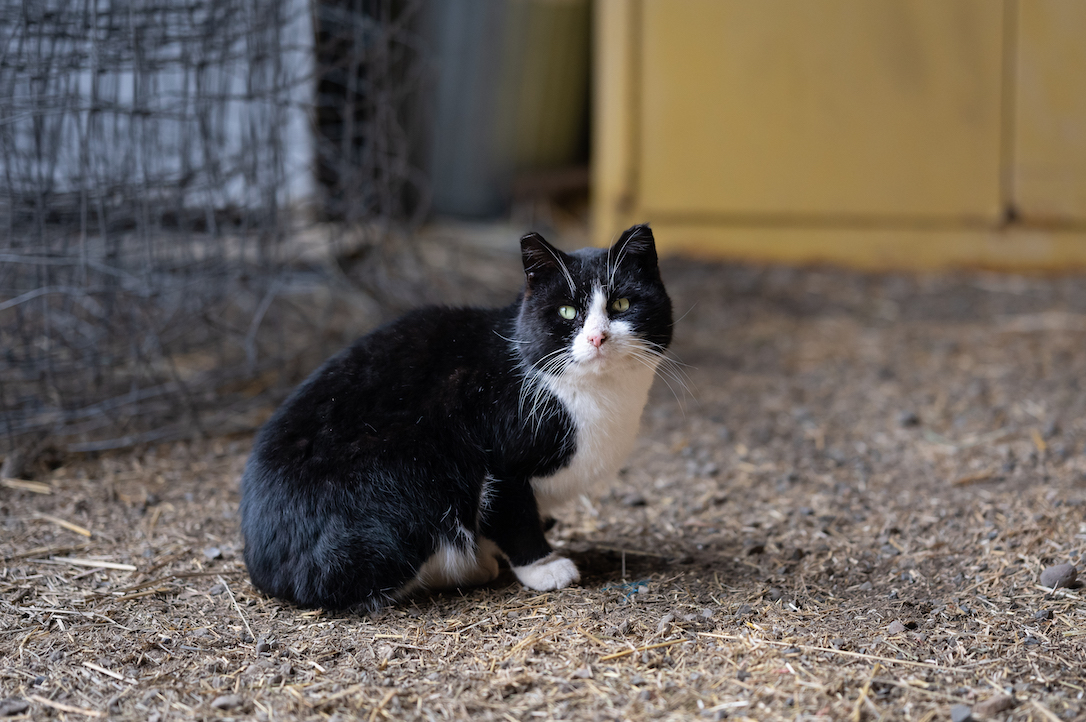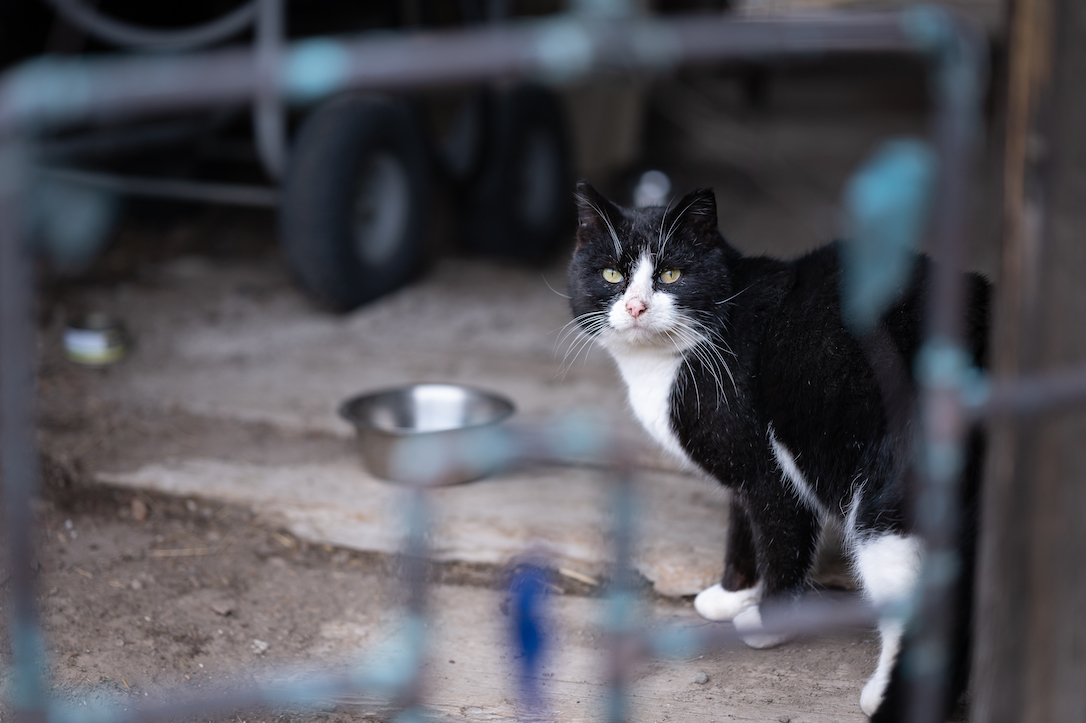In last Tuesday’s post (Twosday), Sofia mentioned that Barn Kitty has returned to the sanctuary.
For those of you who may not be aware, Barn Kitty (“B.K.”) is a free-ranging domestic cat that prowls the patchwork landscape surrounding the Chimp House. It’s believed he divides his time between the sanctuary property and the neighboring ranch, but we have no way of monitoring his whereabouts in real time. We don’t even know with certainty whether Barn Kitty is a true feral (born and raised apart from humans), a homeless stray, or just a particularly independent outdoor “barn cat” from next door. Sometimes, he disappears for months at a time before casually returning. He’s a mysterious lad.
I absolutely love living with cats (and can’t imagine the internet without them), but the existence of stray and feral cats is problematic for various reasons.
For one thing, the historical relationship between humans and house cats is mutually beneficial but not codependent. In many ways, this species was never fully domesticated and differs only slightly from its African wildcat ancestor. Importantly, cats all remain adept hunters and prolific breeders regardless of whether we supplement their diets or not. This self-reliance allows them to subsist indefinitely without much assistance from humans (besides the occasional voyage across an ocean or piggy-back ride across national borders).
The unfortunate loser in this transaction is biodiversity. Many native species, especially birds and small mammals, cannot reproduce fast enough to compensate for the addition of a new predator on the landscape. A 2013 study by Smithsonian researchers estimated that house cats kill billions of wild animals annually in the U.S. alone and individual cats have been observed to kill hundreds of birds and rodents in a single year. Their effect is especially devastating on islands where native species haven’t adapted defenses against land predators and there are no larger carnivores to keep the newcomers in check. This isn’t to say that domestic felines are objectively bad– ecosystems are constantly in flux and most species will do what they can to exploit available niches- but their spread has definitely had a substantial impact on fragile ecosystems during a massive extinction crisis.
A second problem with domestic cats living outdoors is that they’re susceptible to a plethora of factors that can negatively impact their own welfare. In places where native predators such as coyotes and cougars exist, house cats often become a widespread and easy meal. Free-ranging cats are also at risk of accidents such as vehicle collisions and rarely have access to veterinary care when sick or injured, shortening their average lifespan. Without routine vaccinations, feral cats are also largely responsible for the spread of infectious diseases such as FIV.
Of course, a counterargument can be made that feral cats are relieved from the constraints of living in a human home and don’t suffer from the complications of a captive lifestyle: boredom, artificial diets, separation anxiety, overfeeding, etc. While many stray cats can happily return to indoor living, ferals tend to remain fearful of humans for their entire lives.
In areas where free-ranging cats have grown to be particularly bothersome, veterinary professionals will often work with wildlife agencies to curb their impacts. The simplest method of control- culling them outright- is ecologically effective but understandably controversial. Fortunately, less drastic interventions (e.g. trap-neuter-release programs) can yield long-term results while remaining palatable to the general public. The cats can keep living outdoors and hunting, but they lose the ability to reproduce and eventually disappear from the landscape.
In B.K.’s case, we decided long ago that he is welcome here at the sanctuary with one stipulation: that he doesn’t sire any more tuxedo’ed killing machines. Last year, Dr. Erin and Sofia made this official by neutering him while tending to a concerning leg injury. B.K. made a full recovery and, despite being more wary of us, seems to spend just as much time hanging around our barn as he did before. It’s not uncommon to see him lounging on a sun-drenched patch of grass or stalking mice in the nearby thickets. With reliable access to shelter, cover, food, water, and health care, one could argue that Barn Kitty is better off than most free-ranging cats
Caring for animals requires a never-ending series of compromises; the most tenable policies and effective solutions are usually those that balance compassion and logic. I like to think that we’ve found something like that for the furry enigma that we call Barn Kitty.
~~~~~~~~~~~~~~~~~~~~~~~~~~~~~~~~~
P.S. Yesterday, B.K. followed me back and forth around the hay barn as I did chores, so I risked my skin to take some closeups for you all to enjoy.
